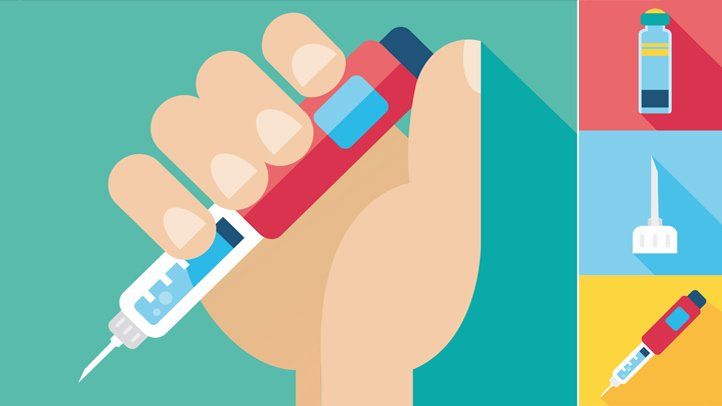What is Type 2 Diabetes?
Experts mark type 2 diabetes as elevated blood glucose or blood sugar levels as a consequence of an unhealthy lifestyle. Glucose is your primary energy source, and it comes from the foods you consume. Insulin is a hormone that helps glucose enter cells and give energy. Diabetes occurs when your body does not produce enough insulin or does not use insulin effectively. The glucose remains in your blood, and not enough enters your cells. People with type 2 diabetes need treatment to help their bodies absorb glucose more efficiently and to help prevent long-term problems.
Type 2 diabetes may target anyone at any age. Some people with type 2 diabetes can control their blood glucose levels with dietary adjustments and oral medication. However, if these medicines do not help regulate glucose levels, peoples with type 2 diabetes may require further therapy.
How to Choose the Correct Type of insulin?
You can choose the correct type of insulin based on the severity, classification of diabetes, and need. Your doctor is the best person to guide you in this process. People with type 2 diabetes often require insulin injections to utilise the glucose from food due to insulin insufficiency or resistance. All types of insulin have the same ultimate effect, however, their functions peak at different periods and last for varied duration.
| Insulin type | Onset | Peak period | Duration |
|---|---|---|---|
| Rapid-acting | 15-18 Min | 60 Minutes | 2 to 4 hrs |
| Ultra-rapid acting | 2 to 18 min | 30 to 60 min | 4 hrs |
| Regular or Short-acting | 30 min | 2 to 3 hrs | 3 to 6hrs |
| Intermediate
acting |
2 to 4 | 4 to 12 hrs | 12 to 18 hrs |
| Long acting | 2 hrs | Doesn’t have Peak | Upto 24 hrs |
| Ulta-long acting | 6 hrs | Doesn’t have Peak | More than 36 hrs |
Which Insulin is Best for Short-Term Blood Sugar Control?
We experience variations in our normal blood sugar levels during the day. However, too high or too low blood sugar levels can cause health problems and disrupt the body’s functioning. Generally, short-acting insulin is advised in such cases. It should be injected 30 min before eating.
The action of short-acting or regular insulin peaks 2 to 3 hours after taking the injection, and its effect lasts for about three to six hours. Regular or short-acting insulin takes longer to take effect than rapid-acting insulin.
Some short-term complications of type 2 diabetes include frequent urination, increased thirst, impaired vision, weariness, and severe headaches. Short-acting or regular insulin aids insulin needs at mealtime, keeping the sugar levels in control. Since it takes longer than rapid-acting insulin to act, it can be injected earlier. Moreover, since its action lasts longer than fast-acting insulin, it controls blood sugar levels for a longer duration. Regular insulin can also be used in combination with longer-acting insulin.
Which Insulin is the Best for Long-Term Blood Sugar Control?
Insulin treatment was once considered a last option. Long-acting insulin expects to maintain blood sugar levels steady overnight or during the day.
Long-acting insulin helps maintain blood sugar levels for a longer duration(min 24 hrs) with minimal fluctuations in the blood levels of the medicine. One or two injections of long-acting insulin a day are enough to ensure optimal blood sugar levels. Blood glucose rises more consistently after taking long-acting insulin, making it easier to regulate.
Long-acting insulin can be injected below the belly, upper arms, thighs, or lower abdomen. Usually, it is advised to inject insulin in the abdomen as it ensures quick absorption.
How Much Insulin Should You Take Per Day?
Every time you eat food, your body breaks the carbohydrates you consume into glucose to generate energy. For this, it requires a certain amount of insulin. When your body cannot create insulin effectively, you’ll need an insulin injection to process your food for energy.
One unit of insulin may be enough to lower blood glucose by 50 mg/dl. This fall in blood sugar ranges from 30-100 mg/dl or more, depending on individual insulin levels and other parameters. The doctor prescribes insulin dosage and frequency based on the condition and body weight. It is usually started from a lower dose and gradually adjusted to meet specific requirements.
What is the best Insulin injection technique?
Insulin must reach the fat layer beneath the epidermis.
- You can pull the skin and insert the needle at a 45º angle.
- If your skin tissues are thicker, you may be able to inject straight up and down (at a 90º angle).
- You can push the needle into the skin. Slowly and steadily inject the insulin until it is fully absorbed. You can wait for the next 5 seconds.
Summary
Diabetes is a condition in which blood glucose, or sugar, is too high. You get glucose from your meals.
Insulin is a hormone that aids glucose absorption into cells for energy production.
- Type 2 diabetes is the most prevalent type and is generally caused due to an unhealthy lifestyle.
- In such cases, your body does not generate or use insulin well.
- If your body does not have enough insulin or cannot use it, the glucose remains in your blood, and its levels keep increasing.
- Prediabetes indicates that your blood sugar levels are higher than usual but not high enough to be diagnosed as diabetes.
